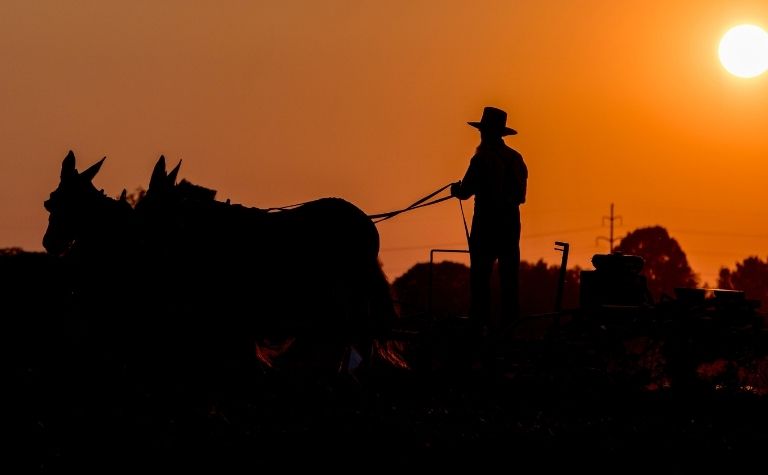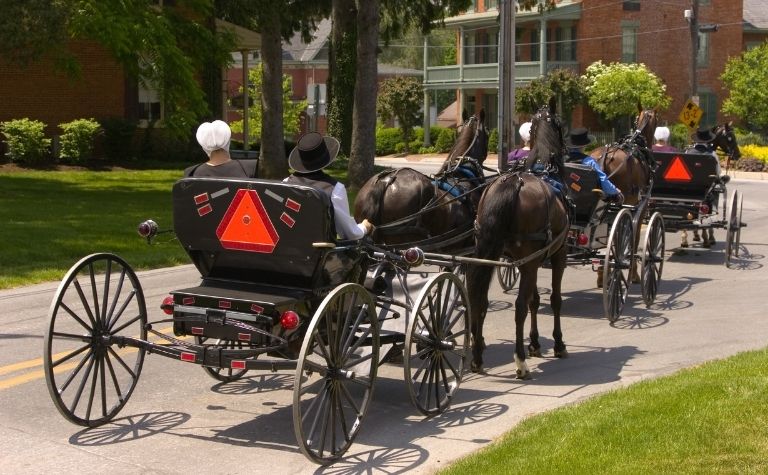The Amish are a Christian community, found mostly in America today, with roots in 17th-century Switzerland. Amish people are known for their appearance and simple lifestyle that rejects many modern amenities. Many outside of Amish communities have limited exposure to Amish people, which leaves them with questions like whether or not there are any black Amish people.
There are very few black Amish. Amish communities have European backgrounds and are overwhelmingly white. However, it’s not unheard of for Amish couples to adopt children from other races who grow up in Amish communities. Those children may or may not remain in the church into adulthood.
This article will explore the ethnic heritage of Amish people, the lack of racial diversity within their communities, and issues of racism as they pertain to the Amish. However, it’s important to remember that not all Amish communities agree on everything, so some of the details described in this article might not apply to every single Amish (or Mennonite) community.
Also see Do Amish People Drink Alcohol? to learn more.

What Is the Ethnic Heritage of Amish People?
No matter where they live now, nearly all Amish people can trace their roots to Europe, specifically Switzerland, though there were also settlements in Holland, Russia, Germany, and Alsace.
Founded by Jakob Ammann, the Amish are a splinter group from the original Mennonite church. [1]
Mennonites were a group of people from Switzerland and the Netherlands who banded together under the leadership of Menno Simons. [2]
They were unhappy with many of the doctrines and practices in the Roman Catholic Church at that time and decided to establish a community that better adhered to their principles.
The group had been reasonably stable since its founding in the 1500s until sometime in 1693. That’s when Jakob Ammann and his followers split from the Mennonites to become the Amish. Afterward, the Amish began immigrating to America.
The first wave of immigration happened in the mid-1700s, with the Amish moving primarily into Pennsylvania. More Amish immigrants came to America in the 1800s, settling in New York, the Midwest, and Ontario.
Also see What Do Amish People Believe? to learn more.
Is There Racial Diversity in the Amish Community?
There’s almost no racial diversity in the Amish community. Amish people are predominantly white with European roots.
Because the Amish don’t actively recruit “new members,” the only new members into the group are almost exclusively the result of births, not recruitment efforts.
While there may occasionally be a black, Latinx, or another non-European member of an Amish community, it’s usually because that person was adopted by Amish parents when they were a child and chose to remain in the church once they reached adulthood and had the chance to decide.

What is Rumspringa?
While not all Amish communities allow the practice of Rumspringa, many do. The ones who don’t often follow the same principle of Rumspringa but don’t give it a name.
Amish youth usually begin their period of Rumspringa when they turn 16; however, it’s not precisely how TV portrays it.
For example, many Amish youths remain in their parents’ homes during their Rumspringas, but they may purchase cars or electronics that they bring home to use.
Additionally, Amish parents don’t encourage their children to go out and “be bad.” The Rumspringa is simply a time for Amish youth to decide whether or not they want to be baptized into the church.
While some teenagers do go out, drink, party, do drugs and have premarital sex, Amish parents don’t support those actions, and many other teens continue to behave in much the same way as always while going out and experiencing the world less sinfully.
Either way, a youth’s Rumspringa ends when they decide to move out of the community for good or be baptized into the church. Marriage to another Amish teenager or young adult (followed by a subsequent baptism) can also end the Rumspringa period.
Either way, the baptism of the new member is how Amish communities grow. Still, it’s important to remember that nearly all the members baptized into the church were also born into and grew up within the community. They aren’t coming from the outside world.
Also see Amish vs. Mennonite: What’s the Differene? to learn more.
Can Outsiders Join the Amish Community?
Outsiders can join the Amish community, but it seldom happens. [3] People accustomed to living in the modern world with modern conveniences have a hard time giving that up to live the simplistic, hard-working Amish lifestyle.
These people would also have to do the following things:
- Move into the community for some time without being an official part of it
- Dedicate time to learning the language, customs, and ways of the Amish
- Commit to being baptized into the faith
The other Amish community members would also have to believe that the outsider had fully committed to the lifestyle and agree that they had earned a place within the church.
This is rare; the only people who “join” the Amish community are usually those born or adopted into it.

Do Amish Communities Have a History of Racism?
Some people claim that Amish communities are racist, while others argue that the Amish are simply cut off from the world and don’t have interactions with people of other races.
There isn’t much evidence to support the idea that the Amish have a history of racism. Historically speaking, the Mennonite church has always leaned towards the liberal side of the spectrum regarding race relations.
The official stance of the Mennonite church is that racism goes against Christ’s teachings and is unacceptable. [4]
One of the founding principles of the Mennonite (and, by extension, the Amish) community is love and respect for all people.
Mennonite communities have a long history of standing up for – or at least supporting – the rights of the oppressed. They even worked to try to abolish slavery.
Unlike the Mennonite communities, which have come out loudly and often against white supremacy and racism, the Amish community is quieter and more close-lipped on the subject. [5] However, that doesn’t mean that they agree with or support racism or white supremacy.
Amish people are just like people of every other race, religious affiliation, or community: Collectively, they aren’t racist, but that doesn’t mean that there aren’t racist individuals within the whole.
Still, as a general rule, the Amish are a community of peaceful, God-fearing individuals who believe in the power of Christ’s love.
Final Thoughts
There are few Amish people who aren’t white Europeans, but that doesn’t mean there aren’t any at all. They are usually adopted into the community.
Also see Do Amish Celebrate Christmas? to learn more.
Please see related articles below
References:
[1] Source
[2] Source
[3] Source
[4] Source
[5] Source
Related Articles
The Amish and Mennonite traditions fascinate many people. Each group's convictions about their Christian beliefs, community values, and the extent to which they should interact with society are...
